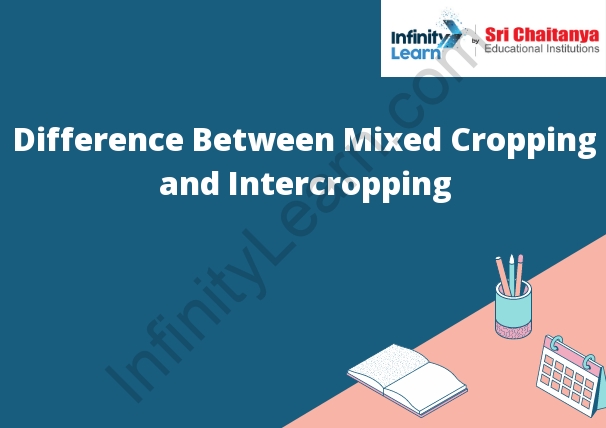Table of Contents
An Introduction
Mixed cropping and intercropping are two different agricultural techniques used to improve crop yield. Mixed cropping is the simultaneous planting of two or more types of crops in the same field, while intercropping is the planting of two or more crops in close proximity to each other.
The primary benefit of mixed cropping is that it can improve soil fertility. The different crops will take up different nutrients from the soil, and leaving the soil with a more balanced nutrient profile. Mixed cropping can also help to control pests and diseases, as different crops have different vulnerabilities to pests and diseases.
The primary benefit of intercropping is that it can improve crop yield. By planting different crops in close proximity to each other, the crops can benefit from each other’s shade, moisture, and nutrients. Intercropping can also help to control pests and diseases.

Types of Intercropping:
There are many types of intercropping, but some of the most common are relay cropping, row cropping, and strip cropping.
Relay cropping is when two or more different crops are planted in successively in the same field. For example, a field might be planted with corn in the spring, and then soybeans would be planted in the summer.
Row cropping is when crops are planted in long rows, with space between each row. This type of cropping is often used for vegetables and fruits.
Strip cropping is when crops are planted in strips, often alternating between two different types of crops. This type of cropping is often used for row crops.
Benefits of Intercropping
There are many benefits of intercropping, some of which are:
1. Increased yields – Intercropping can increase yields by up to 20% compared to mono-cropping.
2. Improved soil health – Intercropping can help to improve soil health by increasing the amount of organic matter and nutrients in the soil, and by helping to create a more diverse soil ecosystem.
3. Increased resilience to pests and diseases – By providing different plants with different pest and disease resistance, intercropping can help to reduce the overall impact of pests and diseases on crops.
4. Reduced need for inputs – Intercropping can help to reduce the need for inputs such as fertilizers and pesticides, as the different plants in the mixture can benefit from each other’s nutrients and natural defenses.
5. Reduced environmental impact – Intercropping can help to reduce the environmental impact of agriculture by reducing the amount of land needed to produce the same amount of crops, and by reducing the amount of inputs needed.
What is Mixed Cropping?
Mixed cropping is the practice of growing more than one type of crop in the same field. This type of cropping system is often used to improve soil fertility and provide economic benefits.
Benefits of Mixed Cropping
There are a number of benefits to mixed cropping. One of the most obvious is that it helps to prevent soil erosion. With a diverse mix of plants, the soil is less likely to be blown or washed away. Additionally, mixed cropping can help to improve soil fertility and moisture retention. By planting different types of plants that use different nutrients and moisture levels, the soil can be kept in balance. This also helps to prevent the growth of weeds.
Differentiate Between Mixed Cropping and Intercropping
Mixed cropping is when different types of plants are grown together in the same field, typically to take advantage of complementary characteristics like different heights or rooting depths. Intercropping is when different types of plants are grown together in the same field, typically to exploit differences in rooting depths or nutrient needs.
Key Differences Between Mixed Cropping and Intercropping
The major difference between mixed cropping and intercropping is that mixed cropping refers to the growing of two or more crops in the same field, while intercropping refers to the growing of two or more crops in close proximity to each other.









